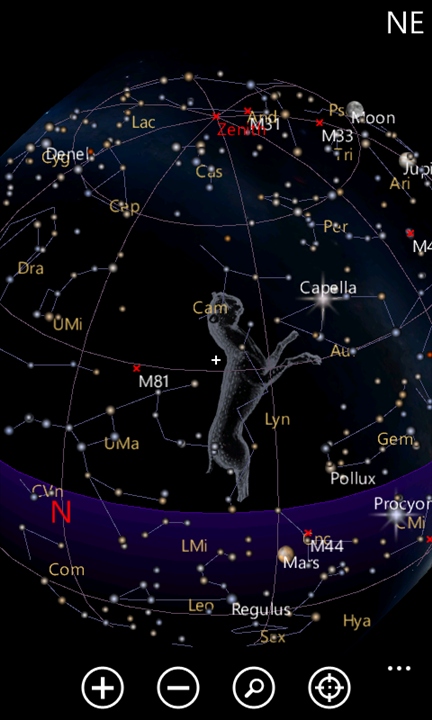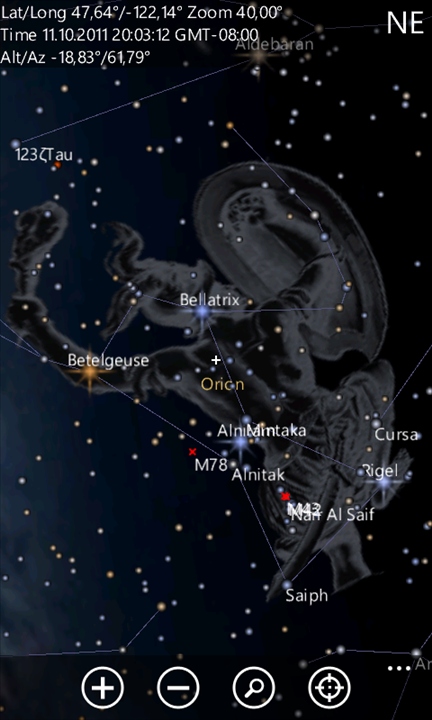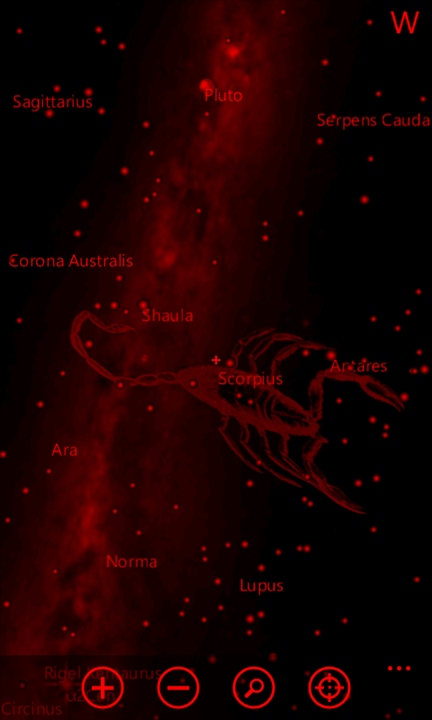Review: SkyMap
Score:
80%
A lot of fuss is made over navigation on the surface of the Earth, but there's far more real estate above our heads than there is just past the Basingstoke roundabout. And while some of us might be able to pick out the celestial highlights, there's far more stars, constellations, planets and galaxies to explore. You could guess, or you could download the planetarium of SkyMap.
Version Reviewed: 2.1.0.0.
Buy Link | Download / Information Link
Holding a huge database of objects in the universe, SkyMap acts as a guide to the night sky, and you can use it in two ways. The first is to answer the question "what is that" and look from sky to smartphone. The other is naturally the opposite direction, asking Skymap where Jupiter is, and then using the screen to find it in the sky.


And here's where all the sensor technology in a modern smartphone comes together to be really useful (cool, or geeky, depending on your take of Astronomy). The local time is taken, along with your GPS co-ordinates, to work out where you are on the Earth, and what you should be seeing in the sky (you can reset this to a specific time and location if you feel the need). Rendering the sky from the built in database to give a personal and unique snapshot, the fun isn't over yet.
You could use this as a regular map, sliding your finger over the screen to look around the digital sky... or you could use the accelerometers in your phone. Switch on "point to sky" mode, and your phone will translate its physical orientation to show you the part of the sky it is looking at. It's almost magical.
Yes, there are a few jitters, this is right at the limit of the tech in a Windows Phone that a third party developer can access, and if your phone is lacking the compass.api then only the azimuth will change - but pointing your smartphone at the sky, to be told what you are looking at, in the middle of the night, no matter if you are in Edinburgh, Yerevan or Orlando... love it!
Unlike the sky populated by dots, there's a lot you can see on the SkyMap screen here. Yes, the dots are there (and with varying sizes to show their magnitude and brightness in the sky), and the constellations are drawn on the screen, all as you would expect. On top of that, you can add in artistic renditions of the constellations, show where the planets of the Solar System (and Pluto) can be found, and display the Messier objects. There's lots here to set up, and it's best to do this before you head out into the night.
In terms of usage, it's very easy to toggle the data levels on the touch screen, both from the regular quick tool bar at the bottom of the screen, but also through a secondary "quick settings" bar that can be added to the side of the screen to provide more options that can be used while stargazing.


There's one evil touch in all of this, and that's the "night view" mode, which drops the brightness of the screen down, and uses shades of red and black for every screen element - this is to preserve your night vision. If you're surfing the sky on the free trial, then the red is still there, but the in-app advertising is locked to bright white. So bright you can see the echoes of Perdition's Flame when you look back up into the cosmos. Pony up the 99p if you like the app, okay?
SkyMap is a nice little application. By the nature of Astronomy (with the majority of observations and study now made outside of the visual spectrum), Skymap is for the keen amateur. In that sense, there's more than enough details here when you turn everything up to the maximum. At the same time, this can feel a bit of an overload, so you can tune it back for a more casual look at the sky.
It looks good, it makes for a great technical demo of Windows Phone, and is just fun to use to navigate around the sky. Now, all I need is some turn-by-turn directions to get to Phobos...
Reviewed by Ewan Spence at
